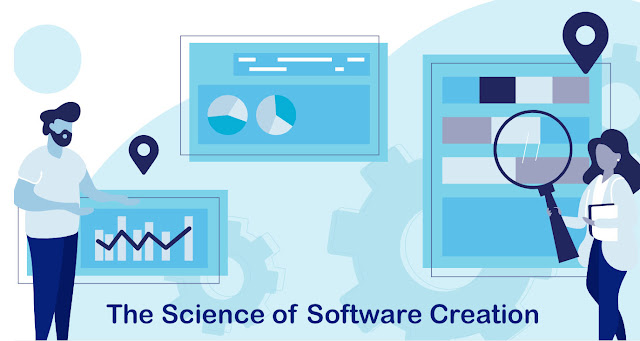"The Science of Software Creation" refers to the systematic and analytical process of designing, developing, testing, and maintaining software using programming languages and various tools and frameworks. It involves the use of various methodologies, such as Agile or Waterfall, and can include the development of applications for a wide range of purposes, including web applications, mobile apps, desktop software, and more. The goal of software development is to create high-quality, reliable, and efficient software that meets the needs of users and customers.
The term "science" in this context highlights the technical and methodical aspects of software development, suggesting that it is a field that requires a systematic and analytical approach. This includes understanding of the underlying principles of computer science, such as algorithms and data structures, as well as the ability to apply these principles to the development process. It also suggests that there is a level of precision and accuracy involved in the process, which requires a deep understanding of the tools and technologies used in software development.
In summary, "The Science of Software Creation" emphasizes the technical and analytical nature of software development, highlighting the importance of understanding the underlying principles of computer science and the ability to apply these principles in the development process.
What is software development
Software development is the process of designing, creating, testing, and maintaining software using programming languages and various tools and frameworks. It involves the use of various methodologies, such as Agile or Waterfall, and can include the development of applications for a wide range of purposes, including web applications, mobile apps, desktop software, and more. The goal of software development is to create high-quality, reliable, and efficient software that meets the needs of users and customers.
Software development can be broken down into several stages, including:
- Requirements gathering and analysis: This stage involves determining what the software should do, who will use it, and how it should be designed.
- Design: This stage involves creating a plan for how the software will be built, including the architecture, user interface, and data model.
- Implementation: This stage involves writing the code for the software, using programming languages such as Python, Java, C#, and more. This stage also includes testing the code to ensure it meets the requirements and fix the bugs.
- Testing: This stage involves verifying that the software functions as intended and meets the requirements. This includes both unit testing and integration testing.
- Deployment: This stage involves installing the software on a production system and making it available to users.
- Maintenance: This stage involves monitoring the software after it has been deployed, fixing any bugs that are found, and updating the software to meet changing user needs.
About some of the aspects of software development:
Software development methodologies such as Agile and Waterfall have different approaches and goals, but both are widely used in the industry. Agile development is a more flexible approach that emphasizes rapid iteration and continuous delivery, while Waterfall is a more structured approach that emphasizes a clear separation of stages and a strict adherence to the plan.
In addition to the development process, software development also involves the use of various tools and frameworks to aid in the process. IDEs, such as Visual Studio and Eclipse, provide a development environment for writing, debugging and testing code. Version control systems (VCS), such as Git and SVN, are used to manage and track changes to the codebase. Testing frameworks, such as JUnit and NUnit, are used to automate testing, and continuous integration tools, such as Jenkins and TravisCI, are used to automate the building and testing process.
Overall, software development is a complex and multi-disciplinary field that involves a wide range of skills and technologies, it's essential to have a solid understanding of the entire software development process, including requirements gathering, design, implementation, testing, deployment, and maintenance.
 |
| About some of the aspects of software development |


